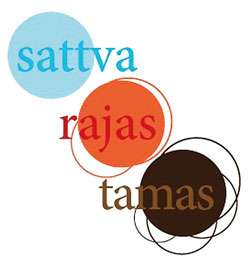Reply To:
Name - Reply Comment

 The great Ayurvedic specialist in ancient times Charaka who had analyzed the mind-body relationship on a wide scale had identified the human mind under three Gunas (qualities) for the purpose of tracing disease. The three Gunas are: Sattva, Rajas and Tamas.
The great Ayurvedic specialist in ancient times Charaka who had analyzed the mind-body relationship on a wide scale had identified the human mind under three Gunas (qualities) for the purpose of tracing disease. The three Gunas are: Sattva, Rajas and Tamas.
Meanwhile, some eminent astrologers say that these three Gunas are found embedded in everyone and everything under the Sun; it is the proportion present that varies. That means these Gunas are present in things and persons in different proportions making one thing or one person different from another in general character and nature.
Sattva denotes goodness signifying the personality qualities being constructive and harmonious.
Rajas denotes passion signifying action leading to confusion
Tamas denotes darkness signifying destruction and chaos.

What becomes the nature of the human mind when these three Gunas operate in it in varying proportions?
When Sattva Guna predominates the mind, it becomes a Suddha Manas or a pure mind. The activities of a person with a Sattva mind are constructive and harmonious and are, therefore, conducive both to the self and the society at large. Such a mind is Kalayanamsa Vishishta (replete with the excellence of elements)
When Rajas Guna becomes the predominating Guna of the mind it gets filled with strong passions like anger, malice and hate and the activities of the person concerned get motivated by such feelings. Such a mind is called Roshamsa Vishishta (element of ill-will
in control).
When Tamas Guna takes control of the mind, the person concerned would resort to both wicked and senseless leading to chaos and destruction. Such a mind is called Mohamsa Vishishta (element of ignorance in control).
Having categorized human nature into three main categories as Sattva, Rajas and Tamas, Charaka has further divide these categories into human types attributing to each type some specific characteristics.
Following are human types coming under the Sattva Guna:
Brahma type: Intellectual and moral, fortified with scientific or philosophical knowledge, truthful, base instincts and passions as well as emotions are under control.
Arya type: Religious-minded, endowed with a keen perception and persuasive power. Senses and emotions under control.
Aindra type: Endowed with great energy and power. Engaged in economic activity while finding time for religious and pleasure-giving activity as well.
Yamya type: Endowed with mindfulness, perseverance, a strong memory and attentive to one’s duties and obligations. Senses and emotions are under control.
Varuna type: Calm and quiet, courageous, meticulous, immaculate, energetic, helpful to those deserving help, showing anger and resentment on occasions considered appropriate.
Kaubera type: Attached to the family, attentive to religious and secular duties, favoring those who merit it and punishing those considered as deserving punishment.
Gandharva type: Fond of music, dance and arts and cosmetics within reasonable limits.
Following types come under Rajas Guna
Asura type: Endowed with physical prowess, fond of riches and given to anger, self-conceit and gluttony.
Rakshasa type: Ill-tempered, aggressive, cruel, malicious and tough
Paisacha type: Lethargic, unclean, cowardly and intimidating.
Sarpa type: Aggressive when angry, but generally timid, has strong likes and dislikes and sensual cravings.
Praitya type: Gluttonous, unpleasant nature, slothful, envious of others’ success, intolerant and greedy.
Sakuna type: Fond of sensual pleasures, fickle-minded, ruthless and extravagant.
Following types come under Tamas Guna
Pasaya type: Dirty, shabbily dressed, unethical in dealings, fond of sensual pleasures, does not see good anything.
Matsya type: Timid, stupid, gluttonous, wrathful, malicious, shiftless, fond of going about and water and liquids
Vanaspatya type: Indolent, lethargic, gluttonous, alien to any cultured or intellectual activity.